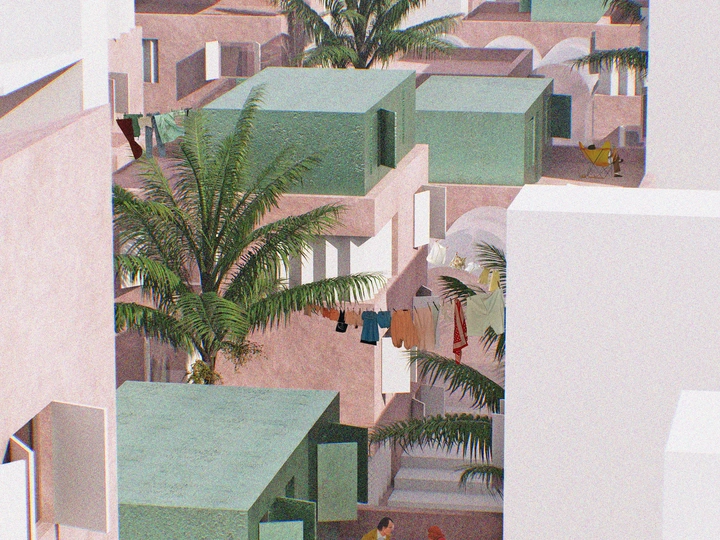Affordable Heterotopia: A Housing Manifesto

Born in 2000 in Split, I’ve been drawn to both technical and artistic fields from an early age, a dual interest that naturally led me to architecture. My academic journey culminated in a Master’s degree in Architecture and Urbanism in 2024, with a thesis project titled Ko-101: Affordable Heterotopia, which was shortlisted for the EU Mies Young Talent Award.
Throughout my studies and early practice, I’ve focused on topics such as social architecture, public space, and housing. I approach architecture as a tool for rethinking how we inhabit space, grounded in context, socially engaged, and free from stylistic dogma.
I’ve participated in several architectural competitions, with a focus on socially relevant programs, particularly kindergartens and memorial spaces. Notably, I received the 2nd prize for a Memorial Center in Gospić, Croatia and the 5th prize for a kindergarten in Pula, Croatia. My work on temporary urban interventions includes the Advent Pavilion in Split: a small-scale, collaborative public installation that reactivated a neglected urban corner.
During my studies, I also worked as a teaching assistant in architectural representation and collective housing, and gave a guest lecture at the Faculty of Architecture in Sarajevo. My academic achievements were recognized with two Dean’s Awards.
I see architecture as a socially responsible, critical practice - one that listens before it draws. Outside of work, I enjoy reading, brewing craft beer at home, and staying curious about the world
This project emerged as both a political and professional statement, shaped by the overlapping crises of our time — economic, social, environmental, and spatial. At a moment when architecture becomes the framework through which these crises unfold, Ko-101 responds by rethinking its role within this systemic context.
Ko-101 stems from the belief that architecture must engage with its social and material realities — not through grand gestures, but through careful, layered work grounded in context. The project is shaped by an understanding that spatial questions are inseparable from societal ones, and that meaningful architecture begins with listening: to territory, to people, to scales both large and small. It favours modest, low-cost, and ecologically responsible construction, placing value in the everyday over the exceptional. Rather than offering fixed forms, it proposes a system that can evolve over time — open to use, change, and appropriation. In doing so, it rejects architecture as image, and insists on its role as infrastructure for life.
Ko-101 rejects spectacle-driven development in favour of a simple, affordable, and generational spatial system — one that is open-ended, temporally layered, and collectively shaped. It questions the logic of dysfunctional suburban sprawl and proposes a denser, more grounded alternative focused on real, evolving needs.
The project’s aesthetic was shaped under the influence of Wes Anderson’s work, used here not as a stylistic reference but as a satirical lens — a deliberate critique of the lifeless, characterless grey-and-white speculative housing that dominates today's urban landscape.
Ultimately, Ko-101 is a manifesto — a set of spatial and social ideas aimed at rethinking how we live together. It proposes a shift in architecture’s role: from an object of consumption to a framework for coexistence, resistance, and change.